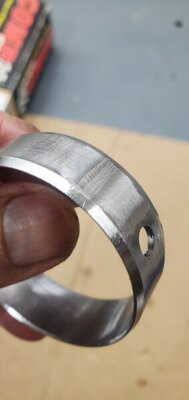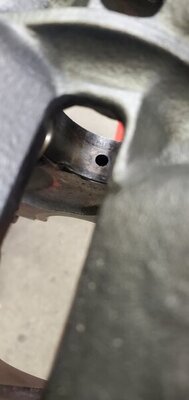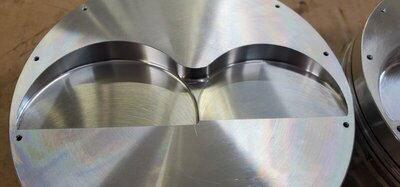dvw
Well-Known Member
My friend Paul comes through again. There was miscommunication when my pistons were ordered. They came with no gas ports. Paul built a fixture to hold tolerance and got it done, at home.
Doug

Doug



















